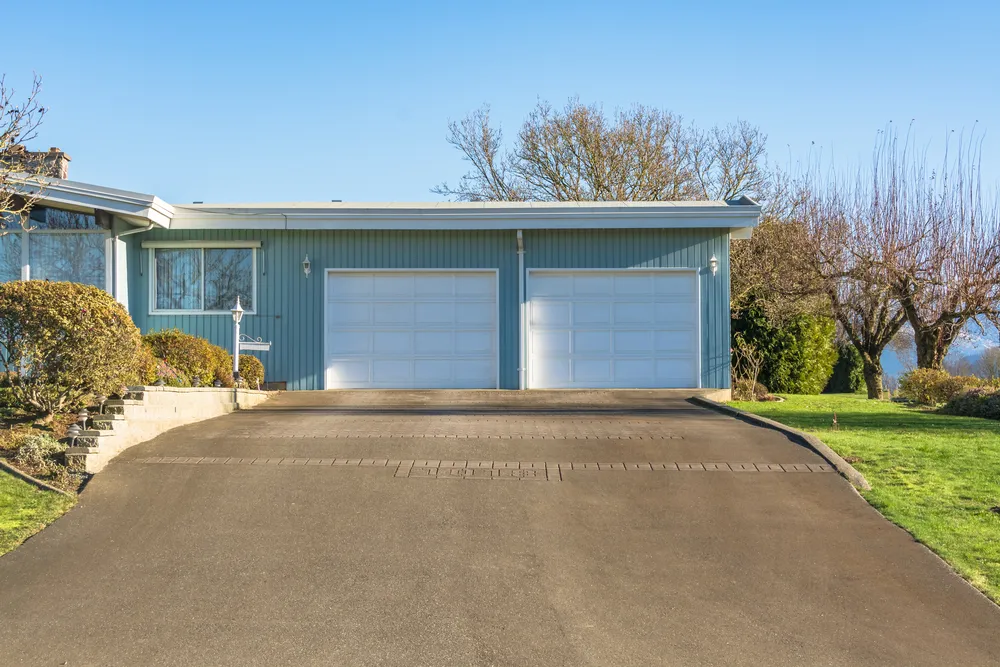Are you planning to install a driveway on your property? Before you begin digging up the grass or laying down the pavement, it’s important to know the driveway width requirements in your area. Different locales have different regulations regarding driveways—some cities only allow them to be as wide as a single car, while others may allow driveways to be double-width.
Knowing the width requirements in your area can help ensure that your driveway meets local regulations and is built to last. In this article, we’ll discuss the importance of understanding your local regulations, double-checking your area’s requirements, common width requirements, factors that affect width, and the disadvantages of narrow driveways.
Understanding Local Regulations
Unlocking the mysteries of local regulations can be like navigating a winding road – but with our help, you’ll be cruising down the highway to success in no time!
When it comes to driveway width requirements, it’s important to become familiar with the regulations in your area. Different areas may require different widths, so it’s vital to know your local regulations.
To get started, head to your local government’s website and look for any information about driveway width and regulations related to the construction of driveways. Alternatively, you can contact your local building department and ask them for any relevant regulations they have about driveway width.
Once you have the information, review it carefully to make sure you understand the specifics. Take note of any rules or regulations that apply to your specific situation, and make sure you’re in compliance with them.
With a thorough understanding of the local regulations surrounding driveway widths, you can ensure that your project meets all the requirements and is a success.
Double-Checking Your Area’s Requirements

You’ll want to double-check your area’s regulations to ensure you’re in compliance; doing so could save you time and hassle down the line.
Before you start your project, you should:
- Make sure your driveway dimensions meet any local width requirements.
- Research nearby homes to determine the average width of driveways in your neighborhood.
- Investigate any zoning laws that may restrict the size of the driveway.
- Reach out to your local building department to confirm any regulations for your specific address.
Taking time to double-check your area’s requirements will help you avoid delays and possible fines. You’ll be able to plan your driveway in accordance with local regulations and ensure your project is completed successfully.
Common Width Requirements

Discovering the necessary width for your driveway is important for a successful project, so take the time to understand the common requirements in your area.
Typically, residential driveways need to be between 8 and 10 feet wide, while commercial driveways need to be between 12 and 20 feet wide. This is to allow enough space for vehicles to enter and exit, as well as turn around in the driveway if need be.
The amount of space needed for your driveway will depend on the size and weight of the vehicles that will be using it, as well as the amount of traffic it will receive. Additionally, some areas may have regulations that require a certain width for a driveway, so make sure to check your local building codes.
When planning the size of your driveway, it’s important to factor in the width of the driveway plus additional space on the sides for vehicles to turn around or park. This will ensure that you have enough room for your vehicles and won’t run into any problems with local regulations.
Factors That Affect Width
Understanding the factors that influence driveway width is essential for a successful project, so make sure to consider them before beginning.
The first thing to consider is the type of vehicle that will be using the driveway. If it’s a single-car driveway, a width of 10 to 12 feet is usually sufficient. For a two-car driveway, 12 to 18 feet is the recommended width. If you plan to park larger vehicles such as RVs or boats, a width of 18 to 20 feet is recommended.
In addition to the size of the vehicle, the layout of the driveway can also affect the width. If your driveway has a sharp turn, for example, you may need to add a few extra feet to ensure adequate turning space. If the driveway is on a slope, you may need to widen it to increase the stability of the pavement.
Finally, be sure to check with local building codes and ordinances to ensure that the width is in compliance.
Disadvantages of Narrow Driveways
Narrow driveways can be a hassle, squeezing vehicles into tight spaces and making it difficult to maneuver. On top of that, narrowness can bring about other issues such as limited parking space for visitors, the difficulty for garbage trucks to access the driveway, and the potential for traffic congestion caused by people having to park their cars on the street.
Moreover, narrow driveways can be dangerous to car owners and visitors, as it may be difficult for them to get out of their cars without getting hit by a passing car. This can be especially dangerous in areas with high traffic volumes.
In addition, narrow driveways can be problematic in snowy climates, as snow plows may have difficulty accessing and clearing the driveway of snow. This can lead to blocked driveways and icy surfaces, which can make it difficult and dangerous for people to access their driveways.
Furthermore, narrow driveways can also be a source of aesthetic issues, as it can make the front of a house look overcrowded and unappealing.
Conclusion
You’ve learned the basics of driveway width requirements, from understanding local regulations to double-checking your area’s requirements.
As you can see, width is an important factor that affects the safety and usability of your driveway. Don’t skimp on width; it’ll be like trying to put a square peg in a round hole—it just won’t work.
Take the time to research and consider your width needs carefully; it’ll be time well spent.



